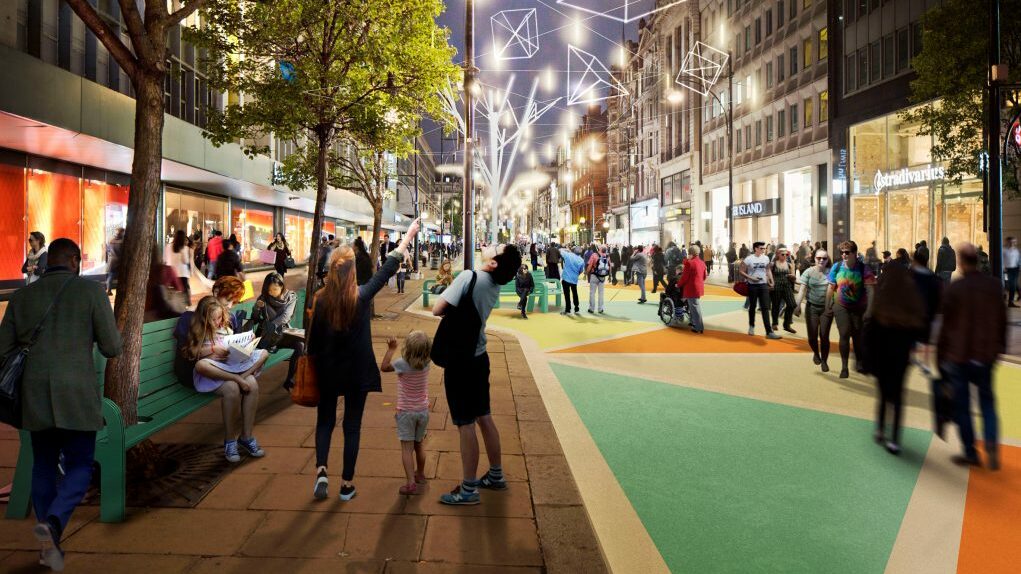
Once known as the most dangerous city in the world, this January Medellín in Colombia was named the number one travel destination on the rise in South America. From a world full of darkness and crime, the city has stepped into the light – thanks to its own society, which remembered its values at the darkest moment. Here is the second part of the story of Medellín.
Billboard
Skyscrapper
Halfpage
The second part of the Medellín series by Alejandro Restrepo-Montoya is about the drug history of Medellín and its effects on society and urban development.
The illegal economy of drug trafficking generated other social dynamics and led to acts of violence in the city that grew over the years. Drug trafficking generated an attractive economy for criminal groups that organised themselves around this activity and – as a consequence – the city changed its planned development process due to an environment of violence that grew over the years.
The spiral of illegal business in Medellín
The illegality of drug trafficking attracted new capital and profoundly damaged the part of society that was rapidly transforming its values. The Medellín of those years was blind in its march to a stage of violence that began in the 1970s; while in the 1980s and 1990s it reached its highest crime rates.
The offer of new opportunities and economic privileges from crime reached the less well-to-do sectors and the poorest neighborhoods (barrios), captivating those who did not have opportunities and leading to blame of a system that provided a scarcity of options. The lack of education, coupled with the attraction of money, made many groups of young people join this army of terror. Large groups of our society fell in love with the illegal activities and criminal transactions that represented – in a short time – large sums of money.
Homicide rate in Medellín increased by 290 percent in nine years
This crisis, which began in the 1970s, worsened in the 1980s and 1990s. The rates of insecurity and homicide in Medellín reached alarming figures. According to Bogotá’s El Tiempo newspaper, 1991 was the most violent year in four decades in the city, with 7,273 murders; a rate of 266 homicides per 100,000 inhabitants.
The drug war against the National Government was open and direct. This crisis led us to position ourselves as one of the most violent cities in the world. On 11 August 2008, the portal razonpublica.com indicated that “in 1983 a period of nine years began, lasting until 1991, in which violence grew rapidly, and the number of homicides almost tripled (increasing 290%)”. The same article also included another alarming figure: “Between 1983 and 1991, the rate went from 34 to 79 homicides per 100,000 inhabitants, the period of the greatest growth.”
Medium Rectangle
Halfpage

An initiative formed in Medellín
The city had reached its most crucial point. Violence and a change in the perception of values had caused profound damage to the social structures of the city.
At that moment, when darkness and disillusion had reached every point of the city, a light opened to recover a society consumed by a scarcity of values, by violence and illegality. The illumination of thought and dialogue made society begin to organise itself and to ask about fundamental values and about life at the darkest moment.
This initiative, driven by reflections from academia, from art and culture, and from different sectors of society, generated other alternatives for public discussion, and citizen and political movements that expressed the feeling of a community that had been overwhelmed by illegality, crime and the loss of values during three decades of violence that overshadowed the urban development that had consolidated the city.
The light in the middle of the crisis
Civil society and academia were precursors of a reflection that had political consequences and brought about change at the most difficult moment. At that time, when the crisis of values was deepening, society began to organise itself, generating deep reflections about the meaning of life in our community.
Academia, in the midst of the years of crisis, had already provided different reflections in the field of social issues. In the field of science, academics continued research processes and the production of new knowledge, and also increased urban development from the faculties of architecture.
Medium Rectangle
Halfpage
Permanent-dialogue groups
In its classrooms during the 1980s and 1990s, academic proposals were made concerning models of city occupation, new urban development, the role of the river, the role of the hills in the urban structure, the planning of growth on the river banks, the re-densification of the city’s central area, the study of environmental conditions and urban structuring based on natural components and transport. These topics were subjects of permanent reflection among the academic community, and these ideas and proposals had great social repercussions.
Among the many actors and with the participation of different sectors of the city, other conditions began to be perceived as a result of these reflections. Academia formed permanent-dialogue groups composed of teachers and students who were also part of the policies of the city’s mayoral candidates, who put into practice the theories that were developed and, in their administration, accompanied several of these university professors who were part of these reflections.
Hope in Medellín has been cultivated
A succession of local governments, from different political parties – but with a unity of purpose concerning social welfare and urban development – began to build the city we have today. Although this is unfinished, and some problems persist, hope has been cultivated.
Click here for the third part of our series.
And the first part of our Medellín series can be found here.












